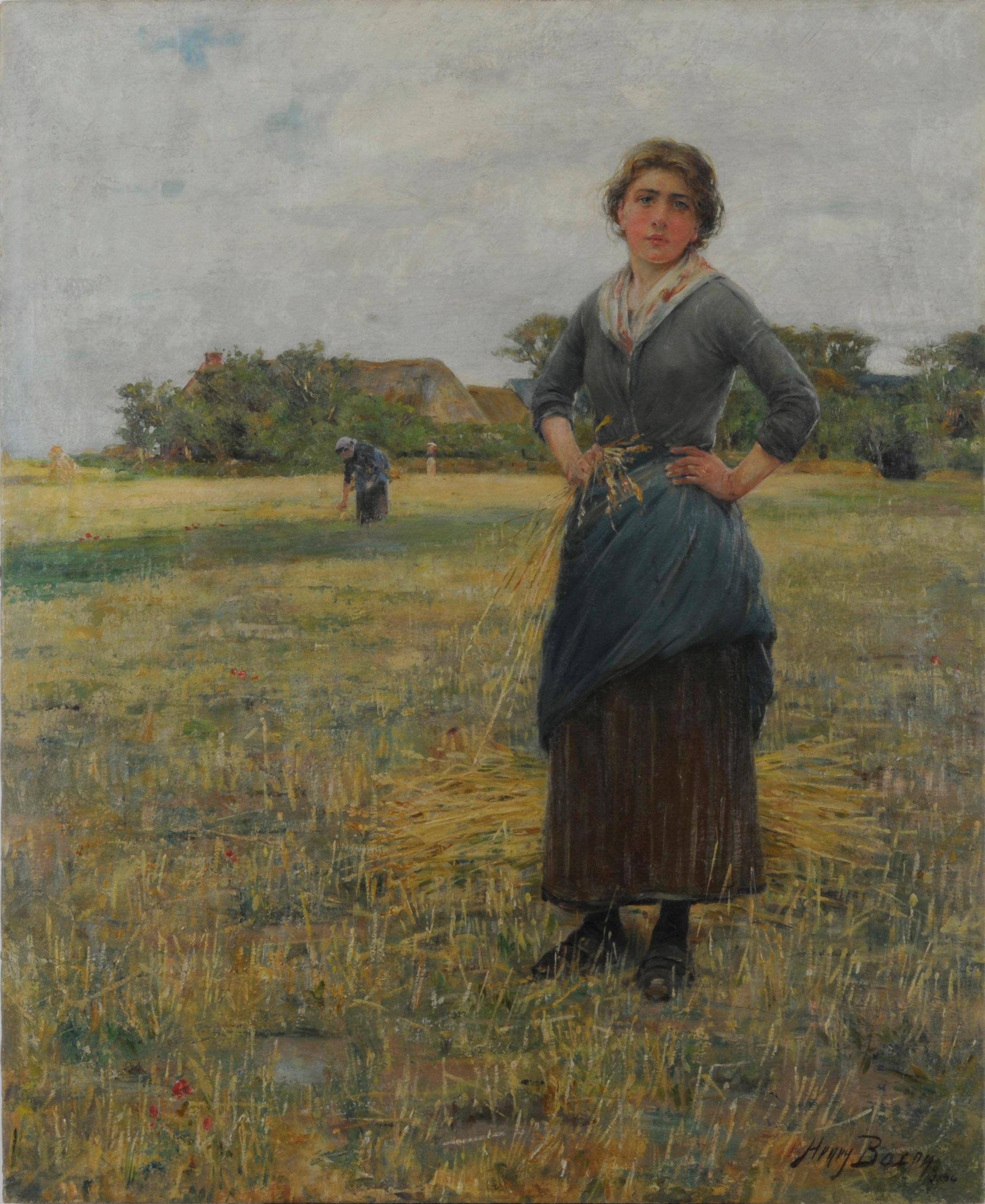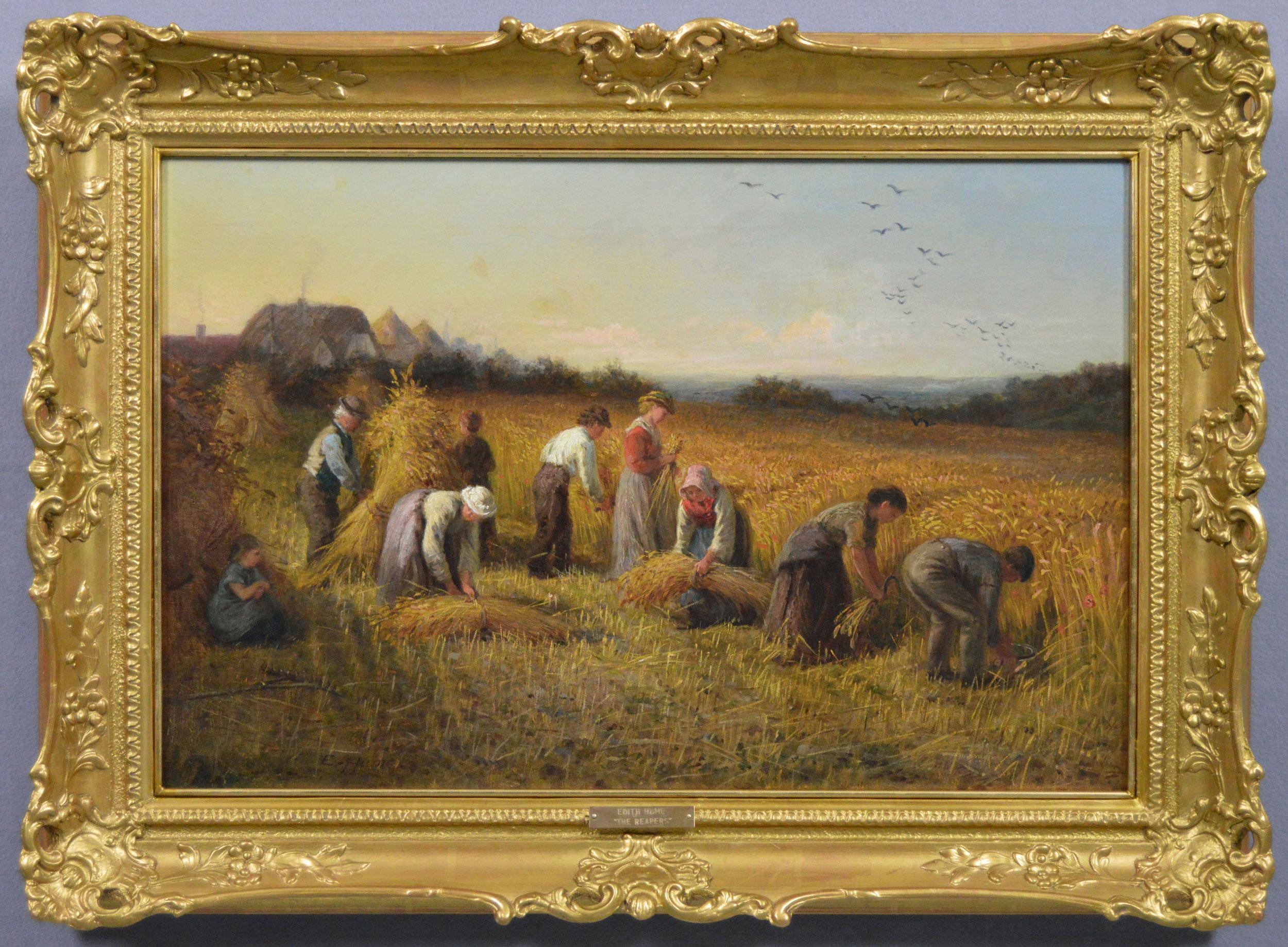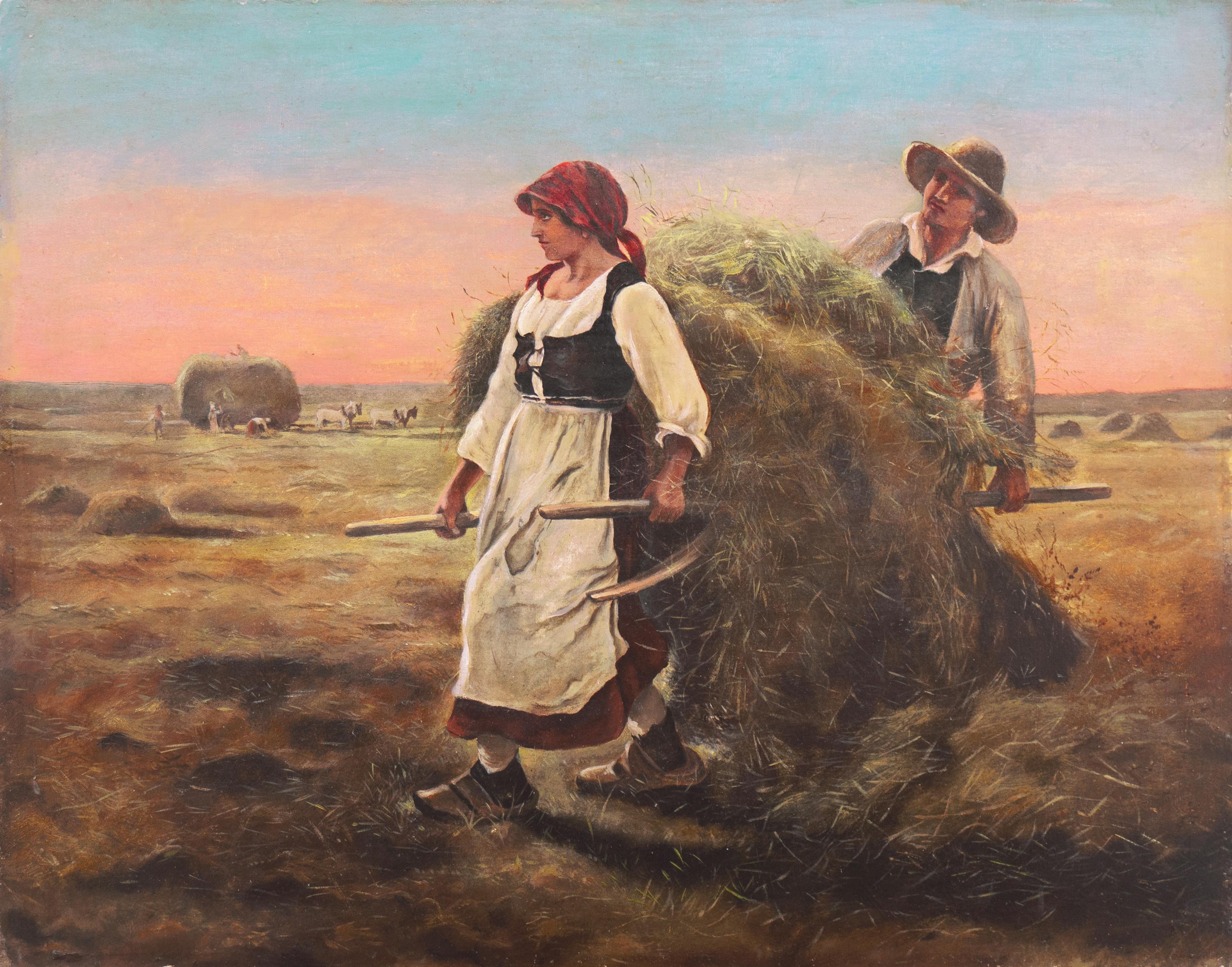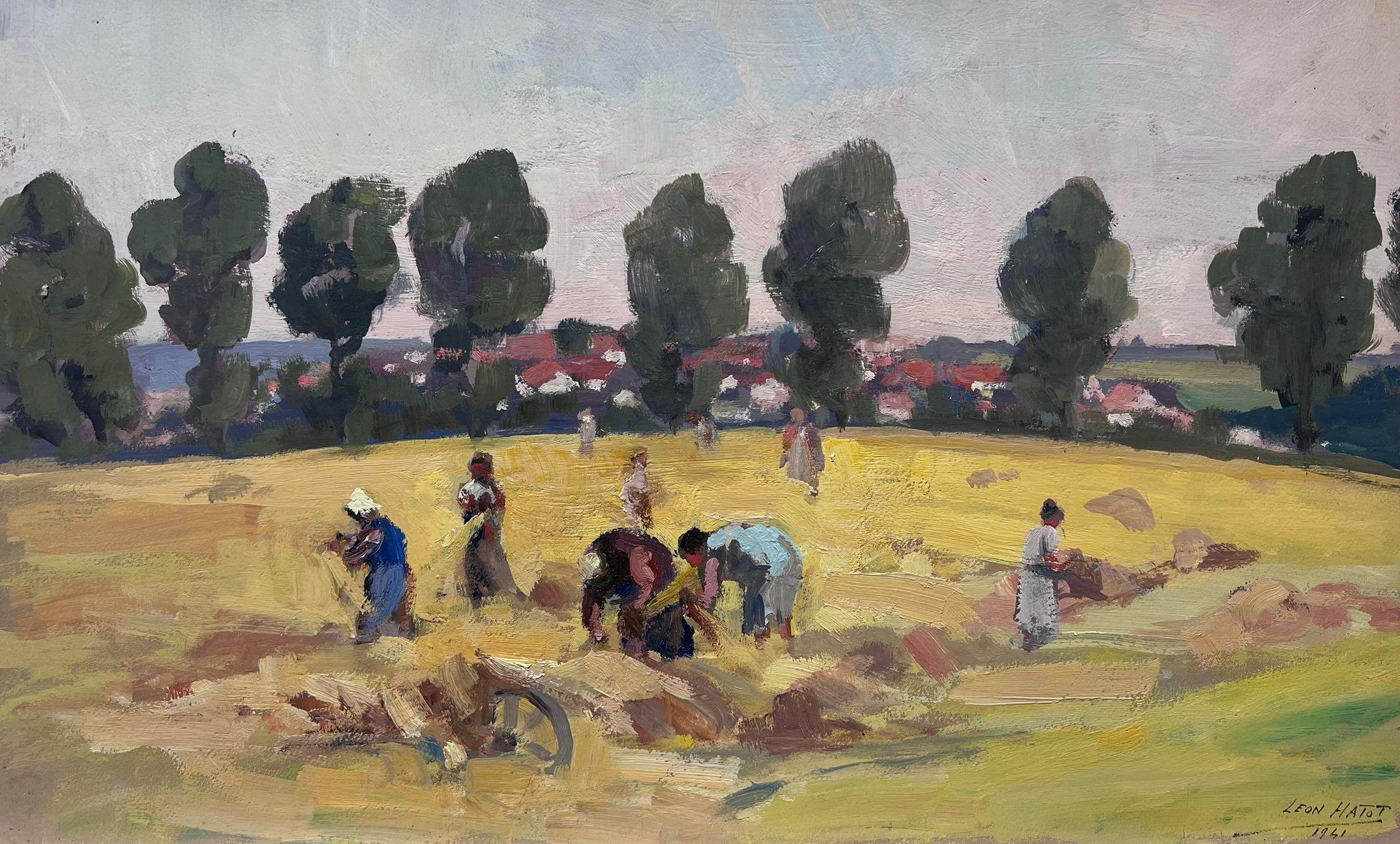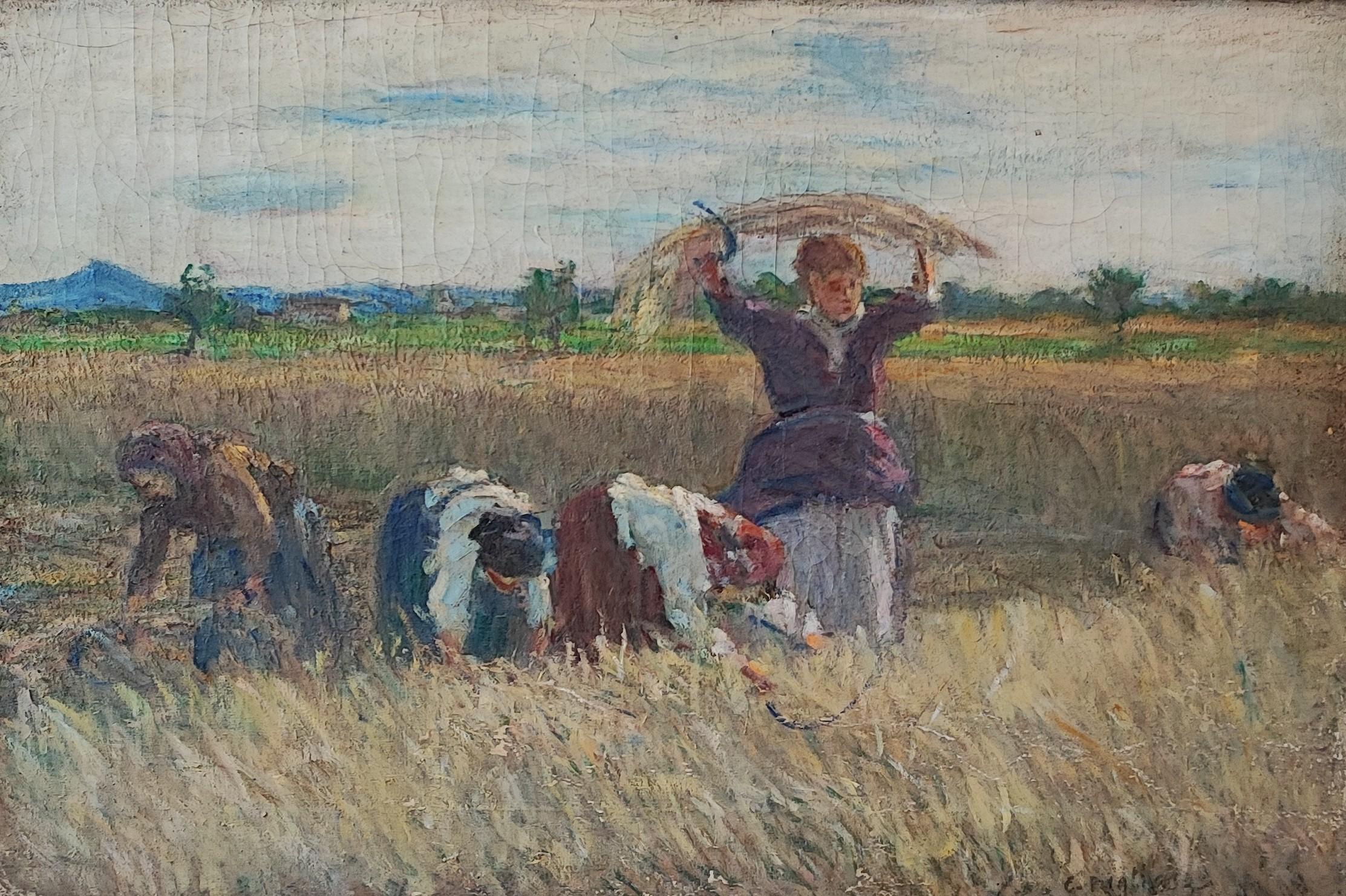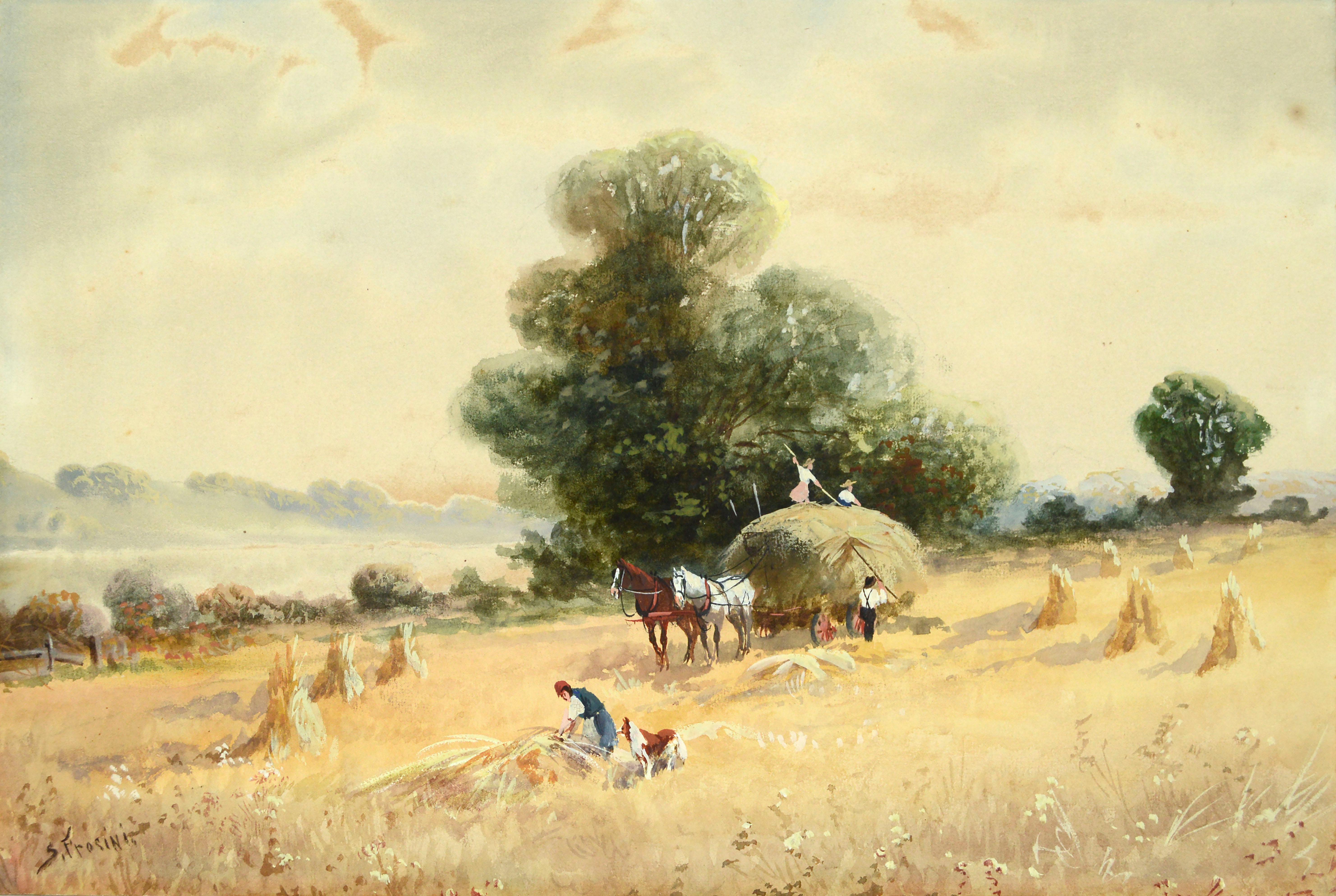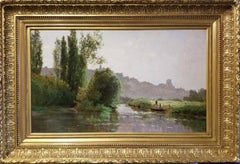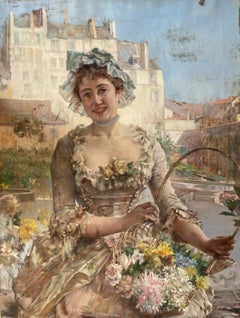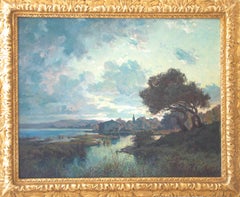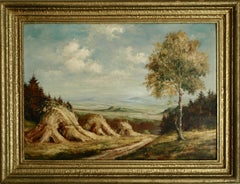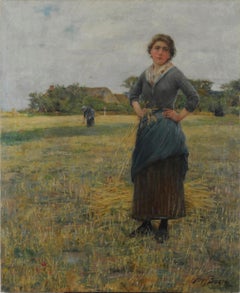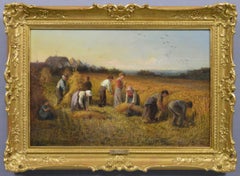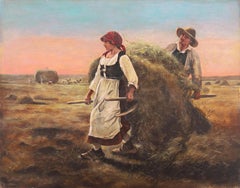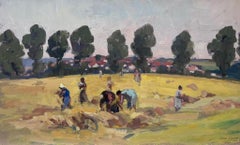Items Similar to Georges Laugée "The Gleaners" French Peasant Woman Working in Field oil/canvas
Want more images or videos?
Request additional images or videos from the seller
1 of 11
Georges LaugéeGeorges Laugée "The Gleaners" French Peasant Woman Working in Field oil/canvascirca 1890-1900
circa 1890-1900
$15,000
£11,320.09
€12,959.79
CA$21,154.97
A$23,225.52
CHF 12,116.80
MX$281,061.15
NOK 151,865.34
SEK 143,097.08
DKK 96,741.36
About the Item
Georges Laugée was a painter known for portrait and peasant figures in landscape painting. He was influenced by William Bouguereau and Jules Breton, gracing the figures in his compositions with a sense of nobility. He studied under Isadore Pils and Henri Lehmann and exhibited in the Salon from 1877.
He often painted the Gleaners working hard in the fields and these subjects are similar in style to Barbizon artists like Leon L’hermitte and Jean-Francois Millet. Georges Laugée obtained a third class medal in 1881, a bronze medal at the 1889 Exposition Universelle, and a silver medal at the 1900 Exposition Universelle. He served as a member of the committee and the jury for the Salon as well. Lauge is exhibited at various French museums including Nantes and Saintes.
Our painting depicts a single peasant woman in the foreground and a small group in the background, gleaning a field of stray stalks of wheat. Gleaning describes the activity of collecting leftover wheat from after the havest. The slanting sun accentuates the volume of wheat and bestows our primary figure a sculptural look. The Gleaners is a perfect example of profound respect for the timeless dignity of human labor.
- Creator:Georges Laugée (1853 - 1937, French)
- Creation Year:circa 1890-1900
- Dimensions:Height: 17 in (43.18 cm)Width: 20.75 in (52.71 cm)
- Medium:
- Movement & Style:
- Period:
- Condition:
- Gallery Location:Rancho Santa Fe, CA
- Reference Number:1stDibs: LU516316471112
About the Seller
5.0
Vetted Professional Seller
Every seller passes strict standards for authenticity and reliability
Established in 1984
1stDibs seller since 2016
89 sales on 1stDibs
Typical response time: 16 hours
- ShippingRetrieving quote...Shipping from: New York, NY
- Return Policy
Authenticity Guarantee
In the unlikely event there’s an issue with an item’s authenticity, contact us within 1 year for a full refund. DetailsMoney-Back Guarantee
If your item is not as described, is damaged in transit, or does not arrive, contact us within 7 days for a full refund. Details24-Hour Cancellation
You have a 24-hour grace period in which to reconsider your purchase, with no questions asked.Vetted Professional Sellers
Our world-class sellers must adhere to strict standards for service and quality, maintaining the integrity of our listings.Price-Match Guarantee
If you find that a seller listed the same item for a lower price elsewhere, we’ll match it.Trusted Global Delivery
Our best-in-class carrier network provides specialized shipping options worldwide, including custom delivery.More From This Seller
View AllEdmond M Petitjean "Etang devant une ville" French landscape c. 1900 oil/canvas
By Edmond Marie Petitjean
Located in Rancho Santa Fe, CA
Edmond Petitjean was born July 5, 1844, in Vosges. He made his debut at the Salon of 1874 and became a member of Salon of French Artists in 1883. He exhibited in Munich from 1890. H...
Category
Late 19th Century French School Landscape Paintings
Materials
Canvas, Oil
FLOWER GIRL by E. Giachi dress & flowers in Italian town landscape LARGE 19th c
Located in Rancho Santa Fe, CA
A wonderful painting by 19th century Italian artist E. Giachi. This large painting depicts an Italian flower girl wearing a beautiful dress carrying a basket of flowers in Italian to...
Category
19th Century Italian School Figurative Paintings
Materials
Oil, Canvas
Paysage (Landscape along the Somme River, France)
By Antoine Ponchin
Located in Rancho Santa Fe, CA
Antoine Ponchin's late 19th-century oil painting, capturing a serene scene along the Somme River in France, beautifully exemplifies the artist's mastery of light and atmosphere. Pain...
Category
Late 19th Century Impressionist Landscape Paintings
Materials
Canvas, Oil
California Landscape with Hay Shocks - 1940s Oil/Board - Trees & Mountains
Located in Rancho Santa Fe, CA
An oil painting on board by Irving Manoir depicting a California landscape with hay shocks circa the 1940s.
Irving Kraut Manoir earned a reputation as painter and art teacher, and ...
Category
Mid-20th Century American Impressionist Landscape Paintings
Materials
Oil, Board
Le chemin de la Faverie
Located in Rancho Santa Fe, CA
Signed lower right
Titled and signed verso
Provenance
Mallet Auction Japan, February 28, 2019, lot 206
Private collection, New York City (Purchased from above sale)
This work is av...
Category
1990s Contemporary Landscape Paintings
Materials
Canvas, Oil
Pêcheur sur l’étang (Fisherman on the Pond)
Located in Rancho Santa Fe, CA
Signed lower left
Provenance
Wally Findlay Galleries, New York
Private Collection, New York City
This work is available for viewing in our New York City showroom.
Category
20th Century Modern Landscape Paintings
Materials
Canvas, Oil
You May Also Like
Woman in a Field
By Henry Bacon
Located in Fairlawn, OH
Woman in a Field (title unknown)
Oil on canvas, 1894
Signed and dated 1894, lower right corner
Unframed
A major exhibition work by this American Expatriate painter. Further research ...
Category
1890s Barbizon School Figurative Paintings
Materials
Oil
19th Century landscape oil painting of harvesters gathering wheat
Located in Nr Broadway, Worcestershire
Edith Hume
British, (1841-1913)
The Reapers
Oil on canvas, signed
Image size: 15.25 inches x 23.25 inches
Size including frame: 21.5 inches x 29.5 inches
Provenance: Sotheby’s Vict...
Category
Late 19th Century Victorian Landscape Paintings
Materials
Canvas, Oil
'End of the Day', Breton Figural Landscape, Brittany Harvest, Style of Millet
Located in Santa Cruz, CA
Late 19th century French School, Unsigned and painted circa 1860. Oil on artist prepared panel. Bearing artist supplier label of 'F.W. Devoe & Co., New York' with 1852 trade mark.
A...
Category
1860s Landscape Paintings
Materials
Oil, Wood Panel
Vintage French Oil Painting Of Harvest Workers In Golden Hay Fields
Located in Cirencester, Gloucestershire
Artist/ School: Leon Hatot (French 1883-1953)
Title: Impressionist oil painting
Medium: signed oil painting on thick paper, stuck on board unframed.
dated 1941
Size: painting: 1...
Category
Early 20th Century Impressionist Landscape Paintings
Materials
Oil
Woman in the field
Located in Genève, GE
Work on canvas
Molded frame
Dimensions with frame 82 x 109.5 x 7 cm
This work captures the vibrant scene of a harvest field, where a central woman forcefully lifts sheaves of wheat,...
Category
20th Century Impressionist Landscape Paintings
Materials
Oil
Wheat Field Harvest, Early 20th Century Figurative Landscape
Located in Soquel, CA
Early 20th century Italian figurative landscape of a traditional wheat field harvest scene, by S. Frosini (Italian, 20th Century). This figurative landscape in gouache depicts in gre...
Category
Early 20th Century Impressionist Figurative Drawings and Watercolors
Materials
Gouache, Illustration Board
More Ways To Browse
Antique Nobility
1900 Portrait Of A Woman Oil
Peasant Woman
Jules Breton
The Gleaners
Bathing Suit Painting
Burton Wasserman
Casey Baugh
Charles H Grant Oil Painting
Del Rosario
Don Quixote Painting
Francks Deceus
Francois Flameng
Francoise Collandre
Giotto Painting
Girl Horse Painting
Grosso Giacomo
Guirand De Scevola
